For the past three years I have had the unique privilege of working intimately with the spirit and physical remains of a young woman who lived in the Yucatan Peninsula nearly 13,000 years ago. She perished when she was approximately 16 years old, deep within an underground cave which is now completely flooded with water.
How her life ended there remains a mystery, but thanks to a team of world renowned scientists using innovative technologies, we now know that she is the oldest human found thus far on the Northern American continent. Also, after having rested peacefully in an underwater tomb for over ten thousand years, she contains the most complete set of skeletal remains of any human in that age-range.
Mitochondrial DNA testing on one of her teeth has genetically linked her to present day Native Americans. As such, she has proved to be the missing link supporting the theory that both the earliest Americans and contemporary native populations came from the same ancestral roots in Asia. We can now extrapolate that the anatomical differences portrayed among Native American peoples reflect evolutional morphology that has occurred over time rather than having resulted from multiple migrations.
The young girl whom our team named Naia was discovered in 2007 by three cave divers who were exploring and mapping cave systems in the area. The explorers were working on behalf of a group of curious land-owners who wondered if any of the small natural water holes (cenotes) found on their property contained underwater tunnels. Cave diving is popular in the region, and interesting cave passages provide a lucrative source of income as a tourist attraction for recreational cave-divers.
I joined the exploration team several months after the initial discovery to assist with underwater documentation activities including the filming and mapping of the site and remains. In addition to Naia, the site contains numerous sets of skeletal remains from a variety of prehistoric animals including Saber-toothed cats, giant sloths, and ancient elephants called Gomphotheres.
It was immediately evident to our team that we had happened upon a remarkable discovery. However due to the threat of accidental or intentional disruption of the remains by recreational cave divers, the site location and findings were kept secret for two years. During that time we slowly began to document the site in a careful and non-invasive manner. We shared this information with the Mexican Archeology Council (INAH), and with their help assembled a team of scientists to study and inform our work in a formal, collaborative manner.
In the early years of the project, we had to hike our gear into the jungle to begin our dives at cenotes that were a considerable distance from the site. We would travel underwater for 3000+ ft through the submerged tunnels of the cave system to reach the sunken pit where the remains were located. We used ‘underwater propulsion vehicles’ and carried multiple bottles of breathing gas to support these dives. Project days were long and arduous, particularly when we conducted research activities requiring additional equipment.
On the way to the pit, we would scooter past an air pocket created by a crack in the ceiling of the cave not far from the descent point into the abyss. If we needed to stop for a break, we could surface for a breath of fresh air.
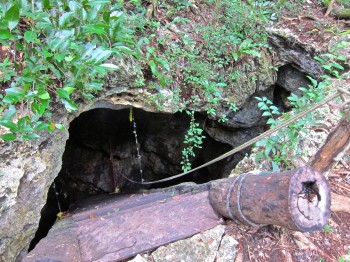 The steep and unforgiving vertical walls made it impossible to climb out of the bell-shaped pocket of this bat cave. Eventually one of our team members purchased the parcel of land where the crack was located. We commissioned the construction of a ladder leading from ground level to a platform built to float on the surface of the water.
The steep and unforgiving vertical walls made it impossible to climb out of the bell-shaped pocket of this bat cave. Eventually one of our team members purchased the parcel of land where the crack was located. We commissioned the construction of a ladder leading from ground level to a platform built to float on the surface of the water.
We now conduct all diving operations from this field station situated much closer to the site. This has allowed easier access and has enabled members of our science team to be a more integral part of our projects in the field.
By 2010, it was evident that recreational cave divers had located the site as we began to see evidence of damage and disruption to the remains. We noticed that a bear skull had been moved so that touring divers could get ‘better video and photo images’, essentially destroying the opportunity for scientists to study the bones in situ to portray an accurate story of the animal’s life and demise. Video footage of the bear later showed up on the internet via U-tube.
The following year we noticed that Naia’s skull had been displaced from its original position. She had rolled from resting on the top of her head to a teeth-down position and was poised perilously close to the edge of a precipice which dropped into a tight, inaccessible hole in the floor of the cave. One of her front teeth had been dislodged and was at risk of falling into the hole, her humerus bone was snapped in two, her right zygomatic process had been fractured, and several additional bones had been completely broken.
While it is most likely that she rolled over accidentally due to the displacement of water by a careless diver, the damage was irreparable. It was clear to our team that her remains were in danger. We therefore changed the objective of the project to prioritize the photographic documentation of her bones and the immediate protection of her skull.
That was when my role as a multi-purpose diver doing a variety of tasks shifted to being the hands-on handler of ancient human remains. My unique skill set made me the best candidate on our team to perform the delicate job of working with Naia’s bones. In essence, I became a human Remote Operating Vehicle (ROV) for our world-class science team, none of whom were trained for deep cave diving.
The Set-up to Protect Ancient Human Remains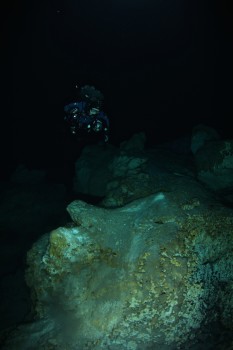
We were distraught to learn that Naia had been damaged by unauthorized divers. We discovered the violation of her remains while on an expedition with National Geographic to capture the largest underwater photographic images in the world. These giga-pixel images were commissioned for the purpose of documenting the site with the most cutting-edge and comprehensive photographic technology yet developed.
The project had already been fraught with complications, in part due to the fact that we were working at a depth of 150ft in a cave with no ambient light. The creator of the imaging technology was not a cave diver, so he had to coach our team on the set-up and use of his elaborate camera system. Nat Geo had also sent lighting technicians to direct us in the use of a massive custom-made underwater light.
We had endured numerous delays and daily equipment failures which extended the duration of our project and taxed our team’s diving capacity. Because the underwater imagery was intended to document Naia in situ in her resting place, the re-location of her remains was pushed to the final days of the project when the entire team was exhausted. In other words, this was a less-than-ideal time to be working directly with fragile, ancient bones.
The first step of the protection process was to remove Naia’s cranium from her original location and gently carry and place her on a turntable we had set up about 20ft away. I was to then rotate the tabletop as our team attempted an underwater laser-scan of the skull. Finally, I was to place her in a custom-made container for safe keeping in a secluded location within the cave. Due to the depth, our breathing gas limitations, and decompression obligations, these tasks were distributed over several days.
As might be expected, I felt a tremendous sense of responsibility associated with the handling, care, and preservation of these precious bones. We had labored in relative secrecy for years to protect Naia from harm, and the success of our endeavors was riding on the outcome of this part of the project.
My trepidation was amplified because I had no idea what to expect in terms of the structural integrity of the skull. I didn’t know whether it would be light as a feather or heavy as as a stone, or if it would crumble, flake, or disintegrate in my hands. I was experienced at performing delicate tasks underwater, but had never handled human bones.
No one knew what to expect, as the bones had been saturating in a nearly anoxic saltwater environment for thousands of years. Our lead scientist postulated that working with the cranium would be the equivalent of handling a ‘hollowed-out ostrich egg’, which was a practical reference point but even his expert opinion was an educated guess.
On the day of the move, top officials from INAH, our lead scientist, and several representatives from National Geographic were on site to monitor the proceedings from the surface. All of the underwater activity was to be captured on film to document this historic event.
In addition to wanting to perform my tasks with the utmost reverence and respect for the ancient human, I knew that the reputation of our collaborative diving and science team was at stake. Added to the topside pressure was the reality that we would be working underwater at a depth of 5.5 atmospheres in a pitch-black overhead environment situated in the middle of the jungle.
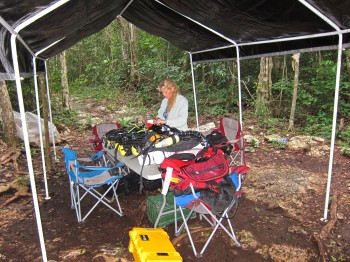 The pre-dive tension on site was so thick that it felt like the air could be cut by a knife. Some of my team members seemed to have difficulty breathing. Surface support personnel were withdrawn and nervous. Our dive leader’s face was drained of color and our dive team preparations were absent of the humorous banter that usually accompanies the assembly and testing of our gear.
The pre-dive tension on site was so thick that it felt like the air could be cut by a knife. Some of my team members seemed to have difficulty breathing. Surface support personnel were withdrawn and nervous. Our dive leader’s face was drained of color and our dive team preparations were absent of the humorous banter that usually accompanies the assembly and testing of our gear.
Though aware of the stress exhibited by the team, I remained relatively serene. I deliberately directed my thoughts inwardly and shifted my nervous energy to become calm but extremely focused. Before the dive, I found a clearing in the jungle to meditate in order to center myself and to connect with the energies of the cave and Naia’s spirit. I asked her permission to respectfully handle her remains, and prayed for the safety of our team.
Once we entered the water and began the dive, our quiet and determined team found its rhythm. We descended into the darkness of the pit and swam towards the remains where my buddy helped me put on surgical gloves. Our videographer moved into place to illuminate and film the action, and I positioned myself just above the cranium to take a moment for silent prayer.
I was acutely aware of my heart pounding in my chest and could feel the intensity of the team as they braced themselves for the move. I intentionally slowed and deepened my breathing rate to sharpen my focus and steady my hands. After attaining a state of complete stillness and relaxation in the water column, I reached down to pick up the ancient skull.
I will never forget what happened next. In the split second immediately before my fingers made contact with Naia’s skull, it felt like a jolt of energy flashed through the water. It was as though her spirit completely awakened and commanded my full attention. When my fingers touched her, I experienced an uncanny moment of tactile familiarity followed by a wave of peacefulness that spread through my body.
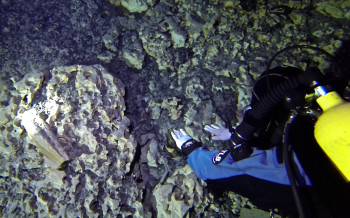 Once the physical connection was made, everything just clicked into place. I smoothly rolled the skull with my fingertips so that her teeth were facing upwards, and watched in awe as a plume of fine, reddish-colored silt drifted like smoke out of the hole at the base of her cranium (her foramen magnum).
Once the physical connection was made, everything just clicked into place. I smoothly rolled the skull with my fingertips so that her teeth were facing upwards, and watched in awe as a plume of fine, reddish-colored silt drifted like smoke out of the hole at the base of her cranium (her foramen magnum).
Naia’s cranium was surprisingly light, yet it felt substantive. She was indeed delicate, but sturdy enough to be gently handled. More important to me in that moment, Naia was mesmerizingly beautiful. Her skull was small, smooth, shiny, and perfectly shaped. I was awestruck. It was difficult to believe that I had been bestowed the profound honor to manipulate the remains of this ancient human ancestor.
In slow motion, I swam to the turntable and placed her skull on a stabilizing bag on the surface of the table. Our photographer managed the laser device as I rotated the table and we proceeded with the scan. At one point, Naia teetered and slowly began to roll off of the bag. I caught her well before she tumbled but not before I could hear my team members vocalize through their regulators in what sounded like an orchestrated scream.
Aside from her near-fall from the table, Naia was amazingly cooperative. Over the next few days we successfully completed our documentation tasks, after which I carefully placed her cranium into the storage container and stowed her safely within the cave.
Later, when we viewed the film of the first human contact with Naia’s skull after thousands of years, it was like watching someone else do the work. Even though I knew the outcome, it was still incredibly nerve-wracking to watch the action, not only for me but for the entire team.
Also, much to our surprise there was an unexplained glitch in the film at the exact moment I experienced the blast of energy in the water. The film spontaneously shows a flash of green pixilation for a split second immediately before my fingers touch the skull, then returns to normal play once contact is made. The clip is so compelling that it is being projected as part of a video loop entitled ‘A New Age of Exploration’ on a large screen at the National Geographic Museum in Washington D.C.
Since that initial contact, I have worked with Naia’s remains on subsequent projects and have performed numerous collections of intricate samples of organic and inorganic materials within the cave. Many of these endeavors have been captured in photographs and on HD film to be shared with the public.
I am often asked how I manage the stress and pressure associated with working with these invaluable remains in a high-risk environment under the indirect scrutiny of a mass audience. I would like to share my insights and strategies for success in the hope that others might benefit from what I have learned.
My work with Naia is best described as a multidimensional experience. It is challenging and engaging on physical, mental, emotional, and spiritual levels. Before elaborating on what it’s like to interact with Naia on a spiritual level, I will first describe a personal ‘formula for success’ that has enabled me to do this work while under a significant amount of performance pressure.
I can wholeheartedly attribute the successful execution of the more ‘mechanical’ components involved in manipulating Naia to the basic tenets of physical mastery: preparation and repetitive practice.
In a sense, I have been preparing for this work for my entire life. My childhood as a competitive swimmer helped me develop a heightened sense of comfort in the water and a high tolerance for performance stress. Martial arts training and regular yoga practice have enabled me to cultivate balance, agility, and body control. In addition, I have spent many years teaching and practicing intricate buoyancy control while on scuba. These disciplines have enhanced my ability to maneuver carefully and effectively while in the water.
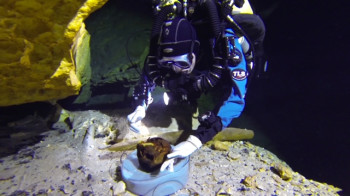 Prior to working with Naia, I physically rehearsed the movement of her bones with the help of our lead scientist who coached me on the precise ways to handle human remains. We performed trial runs on land and I practiced these skills underwater using appropriately sized rocks as replicas. I repeated the motions of lifting, rotating, and placing these ‘stone bones’ several hundred times. I strove to perform the movement smoothly and with minimal disruption of silt.
Prior to working with Naia, I physically rehearsed the movement of her bones with the help of our lead scientist who coached me on the precise ways to handle human remains. We performed trial runs on land and I practiced these skills underwater using appropriately sized rocks as replicas. I repeated the motions of lifting, rotating, and placing these ‘stone bones’ several hundred times. I strove to perform the movement smoothly and with minimal disruption of silt.
As a result of this preparation and much repetition, when the time came to manipulate Naia’s remains I was physically capable of performing the job. However, this was only part of the equation.
Mental & Emotional Training
While physical capacity is necessary for this work, the development of mental toughness and emotional equanimity is equally as important. These additional ingredients are less tangible but can be cultivated through practice of the following four habits: narrowing my focus of attention, imagining the pleasure associated with the success of each task, exercising conscious breath control, and using positive ‘self-talk’ to support the desired result.
Habit #1: Narrowing My Focus to Perform One Task at a Time
While performing important work in the cave, I have honed the ability to direct my complete and singular focus only on the task in front of me. Another way to describe this is ‘short term goal setting’, whereby my full attention is placed only on what is required in the immediate future.
I begin to narrow my focus during the dive briefing. I don’t talk or think about tasks required of us on the following day or the week ahead, but instead pare down my thoughts to include only the most immediate and relevant goals. For more complicated dive objectives, I break the dive into a series of distinct, singular tasks.
This mental discipline has served to greatly reduce stress and sharpen my mind. By focusing fully on each individual task, I am able to be completely present to engage the full capacity of my mind to address whatever happens during the execution of the job. This heightened state of awareness has allowed me to prevent small issues– like the skull threatening to roll off of the turntable, from becoming major problems.
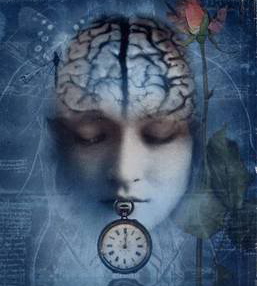 Habit #2: Imagining the Pleasure of Success
Habit #2: Imagining the Pleasure of Success
This is the practice of actively imagining how good it will feel to successfully complete each step along the path to accomplish a given dive objective. I divide the job into smaller pieces so that every step towards completion feels pleasurable. Before and while performing a task, I envision, tell myself, and make a point to notice how satisfying it feels to be making forward progress towards the goal.
Each time a portion of the overall objective is completed, I mentally check it off. A steady surge of positive momentum builds as I experience the satisfaction of being ‘almost’ and then ‘completely done’ with each step of the process. Before long, the goal is accomplished!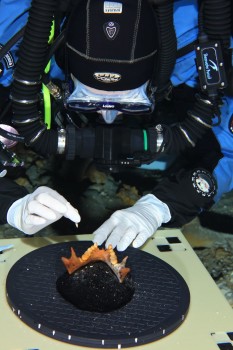
This mental rehearsal and reward process has been scientifically proven to stimulate the brain in positive ways. When we consciously acknowledge progress in small increments, our brain releases neuro-chemicals that support success, deepen feelings of satisfaction, build confidence, and reinforce trust in our belief that completion can occur.
I can vividly recall a highly stressful situation where I was required to painstakingly replace four small teeth that had fallen from the mandible onto the turntable. My hands were shaking, which is extremely rare for me, and I was uncertain that I could get the teeth back in place. I celebrated when each tiny tooth was gently guided into its socket. It took 3 attempts to get the final tooth in place but the job was completed successfully, literally one tooth at a time.
Habit #3: Breath Control… Remembering to Breathe Deeply
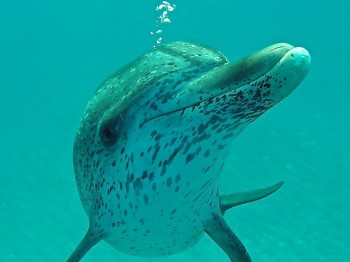 Breath control is the quickest and most valuable way for me to clear my mind and manage my emotions. It is of critical importance as a diver to remain emotionally balanced, clear-minded, and physically calm and while under the extreme conditions of working at depth in an underwater cave.
Breath control is the quickest and most valuable way for me to clear my mind and manage my emotions. It is of critical importance as a diver to remain emotionally balanced, clear-minded, and physically calm and while under the extreme conditions of working at depth in an underwater cave.
Our mind, body, and emotions are intrinsically intertwined. If we become unduly imbalanced for any reason whether as result of anxiety, overstimulation, performance pressure, fear, discouragement, frustration, physical exhaustion, etc, our thoughts can progressively spiral into an unhealthy state of negativity. At this point a portion of our brain called the amygdala (an almond-shaped ganglion which determines whether we are safe or not) is activated, which can trigger a panic reaction.
The intensity of this response can vary from mild to extreme and debilitating panic. Even a relatively mild panic reaction will cause our thoughts, reasoning capacity, and physical actions to be impaired, which can have catastrophic consequences when diving at 150ft in a cave.
The way to offset this reaction is to flood our body with oxygen. The sudden influx of oxygen serves to positively alter our blood chemistry and pacify the amygdala. We can do this by taking a series of deep, slow, full breaths. Within seconds, our blood pressure begins to decrease and our brain becomes saturated with oxygen, increasing our ability to think clearly, react thoughtfully, and perform with efficiency.
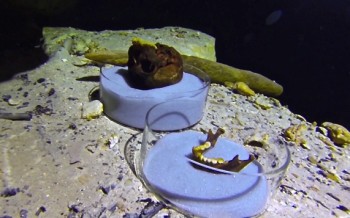 There have been a few occasions when I have had to overcome the onset of a stressful reaction when diving in the pit. My triggers tend to be physical and mental exhaustion combined with a demanding task that contains a high level of uncertainty. I become aware of the excess stress when my body begins giving me signals. This manifests as being suddenly cold and ‘shivery’, having less patience to deal with minor issues, being less coordinated, and in the most extreme circumstance my hands will shake. When I experience any of these signals I immediately practice breath control to clear my thoughts, relax my body, restore optimal brain chemistry, and keep my emotions in check. The positive results are instantaneous.
There have been a few occasions when I have had to overcome the onset of a stressful reaction when diving in the pit. My triggers tend to be physical and mental exhaustion combined with a demanding task that contains a high level of uncertainty. I become aware of the excess stress when my body begins giving me signals. This manifests as being suddenly cold and ‘shivery’, having less patience to deal with minor issues, being less coordinated, and in the most extreme circumstance my hands will shake. When I experience any of these signals I immediately practice breath control to clear my thoughts, relax my body, restore optimal brain chemistry, and keep my emotions in check. The positive results are instantaneous.
Working with Naia’s delicate, fragile mandible has thus far been the most stress-inducing part of the job. I have had to consciously exercise breath control to quiet my mind and relax my body so that my motions are smooth and steady.
Habit #4: Giving Voice To My Inner Support System
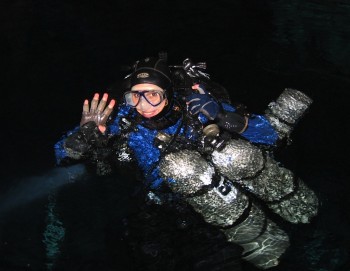 My final habit for success involves the use of positive inner monolog to cheer myself on to achieve a desired goal. I have used this practice to overcome nearly every challenge in my life. Somewhere deep within me there exists a voice of encouragement that surfaces when I need it most. It simply but emphatically says, ”I can DO this!”. I don’t know when I developed this inner voice, but am grateful for its presence throughout my life.
My final habit for success involves the use of positive inner monolog to cheer myself on to achieve a desired goal. I have used this practice to overcome nearly every challenge in my life. Somewhere deep within me there exists a voice of encouragement that surfaces when I need it most. It simply but emphatically says, ”I can DO this!”. I don’t know when I developed this inner voice, but am grateful for its presence throughout my life.
The act of cheering ourselves on while overcoming a challenge builds internal positive momentum. Our beliefs shape our reality, and we create what we focus upon. When we direct our attention towards positive progress and actively engage internal commentary to support our success, we reinforce confidence and strengthen our inner resolve.
The more we cheer ourselves on, the more momentum we create. We do so by developing an internal chorus to acknowledge our capability, emphasize what feels good, and celebrate what is going right. When I encourage myself from a place of personal empowerment, I am assured that I can in fact accomplish my goals.
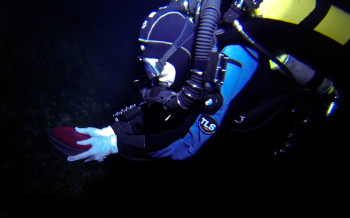 My inner voice spoke to me loud and clear the first time I moved Naia’s cranium. I had taken a moment to become completely still while hovering over her skull in preparation for the move. The entire team was ready and waiting– I could almost feel them holding their breath in anticipation, and I found myself hesitating. The seconds that ticked by seemed like an eternity. Finally, I heard myself say ‘I can DO this’, and as that thought echoed through my mind I reached down and picked her up. The rest, as they say, is history.
My inner voice spoke to me loud and clear the first time I moved Naia’s cranium. I had taken a moment to become completely still while hovering over her skull in preparation for the move. The entire team was ready and waiting– I could almost feel them holding their breath in anticipation, and I found myself hesitating. The seconds that ticked by seemed like an eternity. Finally, I heard myself say ‘I can DO this’, and as that thought echoed through my mind I reached down and picked her up. The rest, as they say, is history.
A Spiritual Connection
 As the underwater custodian of Naia’s remains, I have been asked what it is like to handle the oldest human yet found in the Americas. It is important to note that I operate from a spiritual orientation and therefore my description of this experience is not scientifically quantifiable but instead reflects my personal beliefs.
As the underwater custodian of Naia’s remains, I have been asked what it is like to handle the oldest human yet found in the Americas. It is important to note that I operate from a spiritual orientation and therefore my description of this experience is not scientifically quantifiable but instead reflects my personal beliefs.
In many ways working with Naia is like entering a waking dream state. I strongly sense her presence when diving in the area of her remains, and feel that she is guiding me to handle her in the best ways possible. Before touching and manipulating her bones, I consciously stream energy of appreciation to her and often sing or mantra to her spirit. This allows me to express my love for her and to honor our connection.
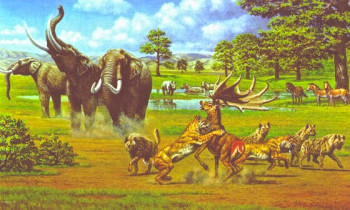 Naturally I am curious about who she was, and wonder what her life was like 13,000 years ago. According to our lead paleontologist, the laws of natural selection dictate that only the most intelligent, clever, and hardy humans survived the harsh environmental conditions of that period. Though she was only 16 years old at the time of her death, the average lifespan of a female of her era was 22 years. Given the size and ferocity of the animals whose remains also lie at the bottom of Hoyo Negro, Naia must have been a smart, strong, and resilient young woman.
Naturally I am curious about who she was, and wonder what her life was like 13,000 years ago. According to our lead paleontologist, the laws of natural selection dictate that only the most intelligent, clever, and hardy humans survived the harsh environmental conditions of that period. Though she was only 16 years old at the time of her death, the average lifespan of a female of her era was 22 years. Given the size and ferocity of the animals whose remains also lie at the bottom of Hoyo Negro, Naia must have been a smart, strong, and resilient young woman.
When interacting with her remarkable spirit, I do so from a place of humility, appreciation, and reverence. The first time I was called upon to handle her bones, I meditated before the dive to ask permission to connect with her in this manner. It was only when I sensed that she had granted permission that I relaxed and intuitively knew that everything was going to go smoothly and beautifully.
I remained in a mildly meditative, prayerful state throughout that memorable dive. The moment my fingers touched her skull it was as though our souls connected– I felt like I was there for a purpose, fulfilling some kind of contract with her soul. It was like reconnecting with a well-loved family member. I felt that Naia was relieved to be seen and respected, and that she was appreciative of the love and care that was being extended to her remains.
Naia Is Running the Show
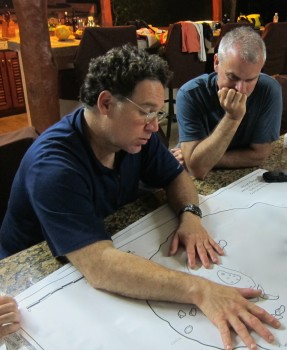 From the time she was discovered it has seemed that Naia has been directing the activities of our team. She is very particular about the kinds of people and energy she will allow to share her resting place.
From the time she was discovered it has seemed that Naia has been directing the activities of our team. She is very particular about the kinds of people and energy she will allow to share her resting place.
Because of the historical importance of her discovery a number of groups have vied for control of the project, often driven by motivations of personal gain and recognition. Our team leader is best characterized by his humility, integrity and complete dedication to the protection of the site and her remains. This orientation has set the tone for our team and all project work.
It is as though Naia had remained hidden for thousands of years to reveal herself only when the timing– and the team, was right. She has insisted that only those who have placed primary importance on her spiritual well-being and have endeavored to protect her remains be allowed to work in her sacred environment.
It has been an honor and a privilege to be part of this team and to work directly with Naia. I am forever grateful for this opportunity of a lifetime.
Thank you to those who have taken the time to share my experience by reading this blog.

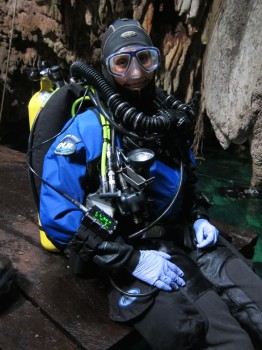
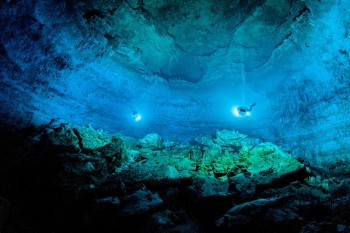
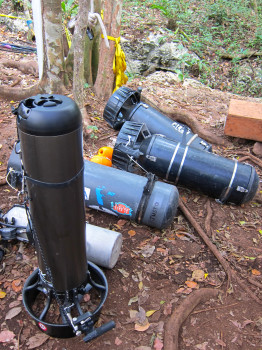
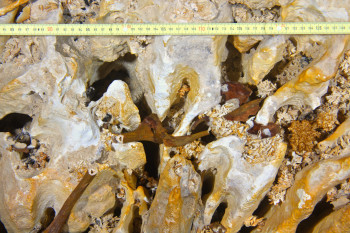
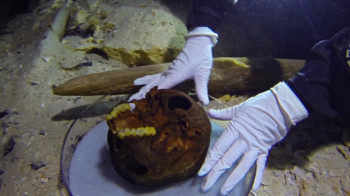
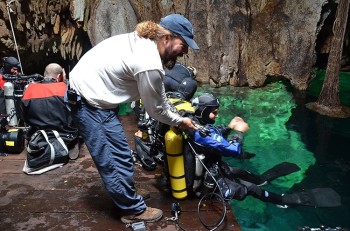

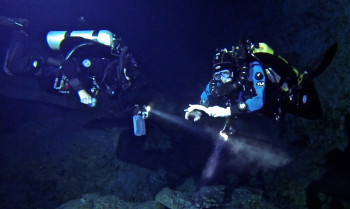
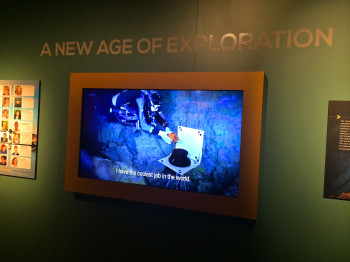
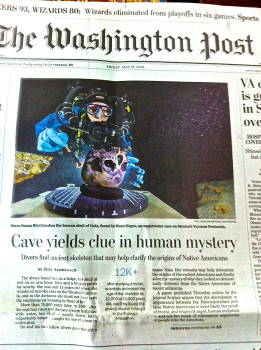
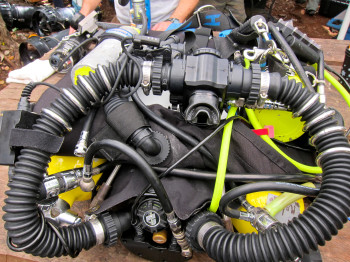
Dear Susan, thank you for sharing this wonderful inner experience through which one can feel your delicacy as Soul.
Your generosity in sharing your habits and strategies is evident. No doubt you were the right person to handle Naia’s remains.
After all, you were her godmother who chose her name! I feel that this was part of the connection you describe here.
As you say, we are studying our own ancestors and our own history. And this is a fascinating privilege!
I loved your story! I read it together with Pilar and it really touched our hearts.
Please, look for the video “Just Sing HU” in YouTube or in http://www.Eckankar.org
I am sure you will love this universal mantra.
May the blessings be!
Beautiful explanation of your experiences in the cave, Susan. I loved reading it.
Susan, thanks for this wonderful account. Your writing represents not only a great recounting of the events surrounding this “journey”, but a comprehensive and helpful guide to the most exciting elements of it, particularly your personal growth/skills. Please consider how others may support you in this, as I’m sure many would love to be involved, and contribute. Very Moving!! Thank you.